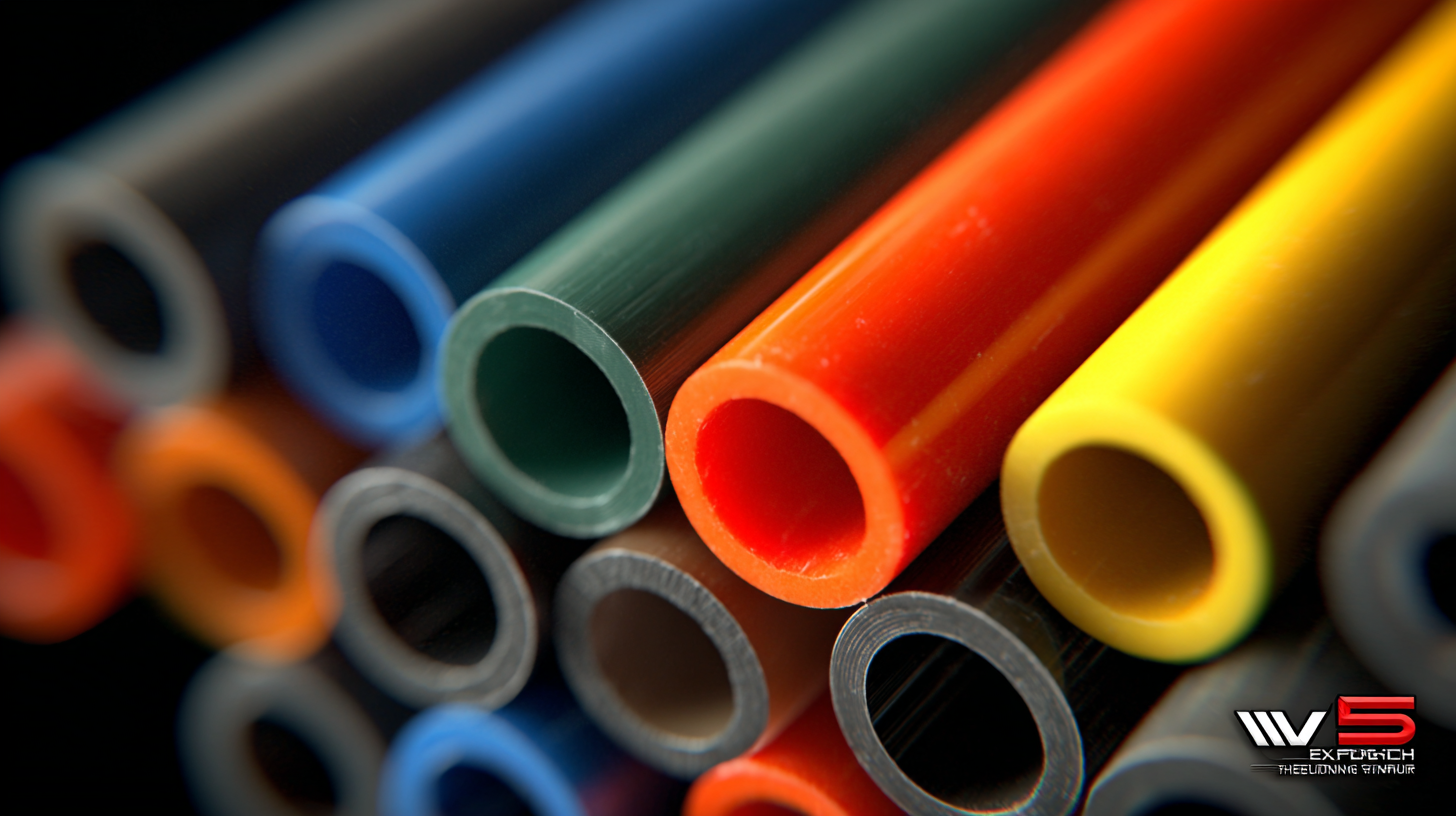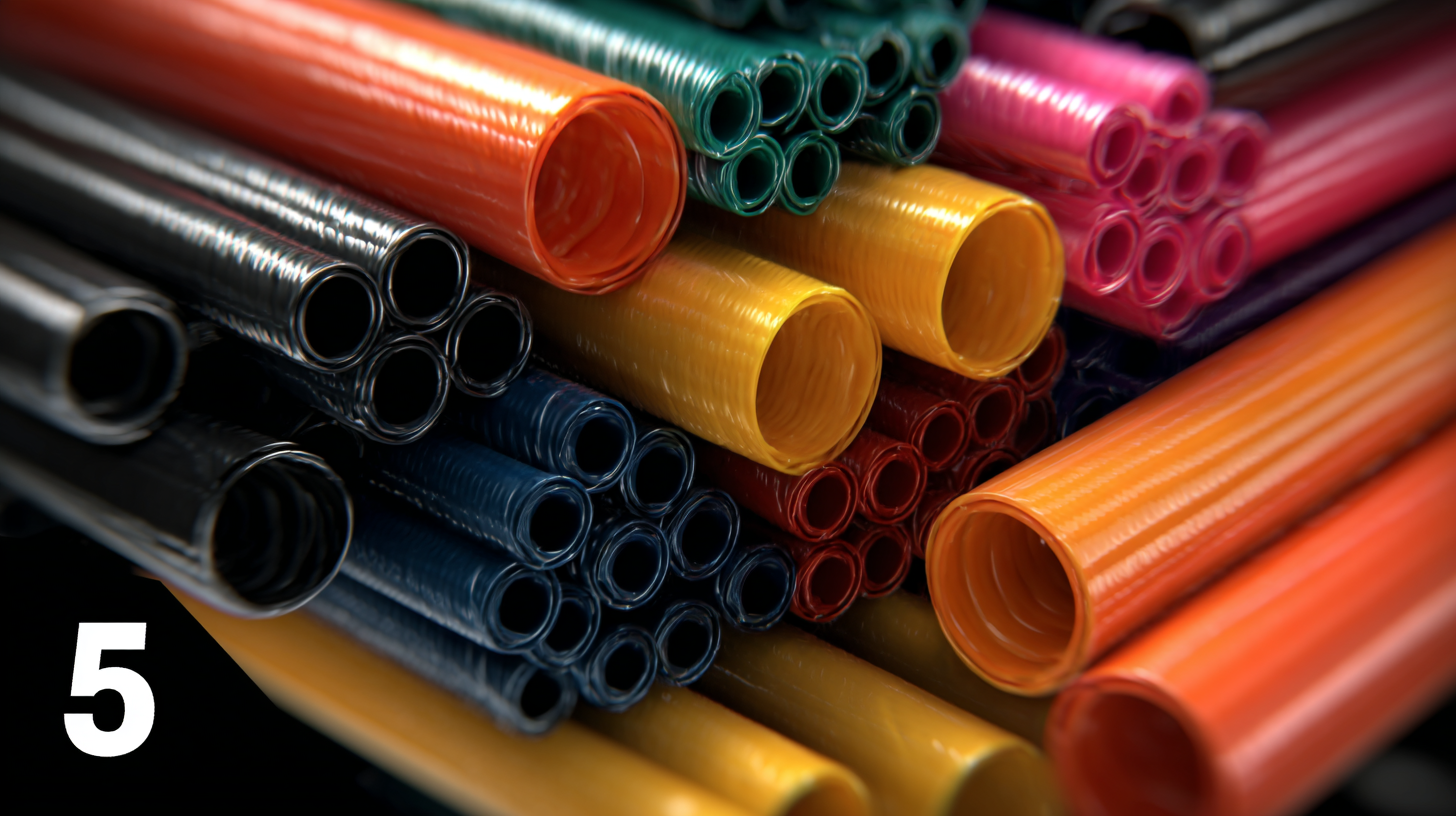In the rapidly evolving landscape of manufacturing, the selection of the right materials is pivotal to project success, particularly when it comes to Extrusion Tubing. According to a recent report by Smithers Pira, the global demand for extruded plastic products, particularly tubing, is expected to reach $40 billion by 2024, emphasizing the growing importance of this segment. Choosing the best extrusion tubing is not merely about meeting specifications; it involves understanding the complexities of post-sale service advantages and maintenance costs. A well-chosen extrusion tubing solution can lead to significant savings on repairs and enhanced operational efficiency, which, as highlighted in the Industrial Manufacturing Report 2023, can reduce downtime by up to 30%. As we explore the five key secrets to selecting the best extrusion tubing, we will uncover how informed decisions can streamline projects and bolster long-term profitability.

When selecting the best extrusion tubing for your project, understanding the different materials available is crucial. The medical industry relies heavily on specific polymers that meet stringent safety and performance standards. Medical elastomers, for instance, offer flexibility and resilience, making them ideal for applications like catheters and seals. These materials can withstand repeated flexing and are often resistant to moisture and various chemicals, enhancing their utility in medical environments.
 Another significant category is fibers and resins, which are used for tubing that requires strength without sacrificing weight. They are commonly employed in areas where durability is essential, such as in surgical instruments or diagnostic devices. Furthermore, advancements in extrusion technologies have allowed for precision tube extrusion, ensuring that these medical polymers can be manufactured to exact specifications, which is vital in applications where dimensional accuracy is key. As technology evolves, the variety and sophistication of extrusion tubing materials continue to grow, providing manufacturers with better options for their specific needs.
Another significant category is fibers and resins, which are used for tubing that requires strength without sacrificing weight. They are commonly employed in areas where durability is essential, such as in surgical instruments or diagnostic devices. Furthermore, advancements in extrusion technologies have allowed for precision tube extrusion, ensuring that these medical polymers can be manufactured to exact specifications, which is vital in applications where dimensional accuracy is key. As technology evolves, the variety and sophistication of extrusion tubing materials continue to grow, providing manufacturers with better options for their specific needs.
When choosing the best extrusion tubing for your project, it's essential to consider several key factors that directly influence the tubing's performance: size, flexibility, and durability. The size of the tubing is critical, as it must be compatible with the components of your application. Incorrect sizing can lead to inefficiencies and potential failures in performance. Additionally, it's important to evaluate the specific requirements of your project—whether the tubing needs to fit into tight spaces or accommodate high flow rates.
Flexibility is another aspect that cannot be overlooked, particularly in applications such as medical devices where bending and maneuverability are vital. Tubing that is too rigid may cause complications, whereas overly flexible tubing might not maintain the necessary structural integrity.
Innovations in materials, like silicone cross-linked polyethylene (Si-XLPE), are addressing these concerns, providing improved thermoplastic performance and resilience.
Lastly, durability is a major determining factor, especially for projects expected to endure harsh environmental conditions or mechanical stresses. The market forecasts indicate substantial growth in the tubing sector, highlighting the increasing demand for reliable and long-lasting solutions in industries ranging from construction to medical devices. By focusing on these factors, you can make informed decisions that lead to successful project outcomes.
When selecting extrusion tubing for applications in harsh environments, evaluating chemical resistance is paramount. Understanding the specific chemicals that your tubing will be exposed to can prevent failures and ensure long-term performance. Different materials exhibit varying resistance to solvents, acids, and bases, so it’s crucial to consider what substances the tubing will encounter in its application.
**Tip 1:** Always consult a chemical compatibility chart to identify which materials will best withstand the chemicals in your environment. For instance, fluoropolymers are known for their superior resistance to a wide range of aggressive chemicals, making them suitable for the most demanding applications.
**Tip 2:** Consider the environmental conditions as well. High temperatures can affect the performance and lifespan of the tubing, so select a material that can maintain its chemical resistance even at elevated temperatures. Polyethylene and polypropylene are often favored for moderate exposure, but more robust options like PFA might be necessary for extreme conditions.
**Tip 3:** Test samples in real-world conditions before finalizing your decision. This hands-on approach can help identify unforeseen issues related to chemical interactions, allowing you to make informed choices that safeguard your project’s success.
Temperature resistance plays a crucial role in the performance of extrusion tubing across various applications. The thermoplastic polyester elastomer (TPEE) market is expected to witness significant growth, with an increasing demand driven by its superior temperature resilience. Research indicates that the TPEE market was valued at over $1 billion in 2022, with projections showing a compound annual growth rate (CAGR) of around 6% through 2030. This robust growth can be attributed to the material's excellent mechanical properties, including heat resistance, which makes it suitable for demanding environments such as automotive and industrial manufacturing.
In manufacturing, the type of extrusion tubing selected can dramatically influence the end product’s durability and functionality. For instance, injection-molded grades of TPEE are favored in automotive applications for their ability to withstand high temperatures and mechanical stress. Meanwhile, applications in consumer products may prefer blow-molded grades that provide flexibility and shock absorption. In contrast, polystyrene foam materials, while widely used for insulation and packaging, exhibit lower temperature tolerance and environmental degradation resistance, indicating a critical need for advanced materials that can exceed these limitations, such as carbon nanotube-enhanced filaments. As industries evolve, the performance characteristics of these materials will remain a focal point for innovation and application efficiency.
| Tubing Material | Temperature Resistance (°C) | Application Areas | Pressure Rating (psi) | Chemical Resistance |
|---|---|---|---|---|
| Polyethylene (PE) | -50 to 60 | Water Pipes, Insulation | 100 | Low |
| Polypropylene (PP) | -20 to 100 | Food Packaging, Automotive | 150 | Moderate |
| Polyvinyl Chloride (PVC) | -15 to 60 | Construction, Drainage | 200 | High |
| Polyamide (Nylon) | -40 to 100 | Automotive Parts, Electrical | 300 | Very High |
| Polytetrafluoroethylene (PTFE) | -200 to 260 | Chemical Processing, Pharmaceuticals | 500 | Exceptional |
When selecting extrusion tubing for your project, balancing quality and budget is crucial. The latest trends in aluminum extrusions reveal a wide variety of options available on wholesale markets, showcasing over 1572 products that cater to different project needs. With prices fluctuating, it's essential to analyze the cost implications of various materials like Aluminum 6061 and 6063, known for their strength and durability. These materials often come in diverse shapes and sizes, making them suitable for a range of applications, from structural components to decorative pieces.

Moreover, advancements in production technology, such as inline inspection systems, enhance the quality assurance processes. These systems enable manufacturers to track defects effectively, which is vital when investing in extrusion tubing. By prioritizing suppliers who implement these technologies, you can ensure that you receive high-quality products that justify the expenditure. In evaluating your options, consider how the choices align with both your budget constraints and the long-term requirements of your project, ensuring you make a sound investment.
TradeManager
Skype
VKontakte

